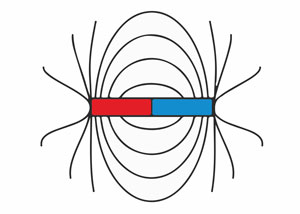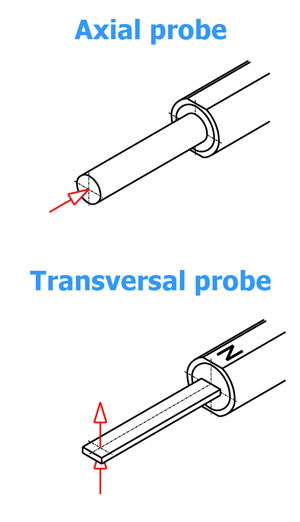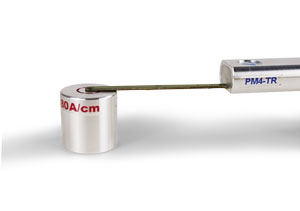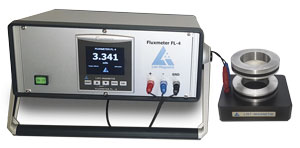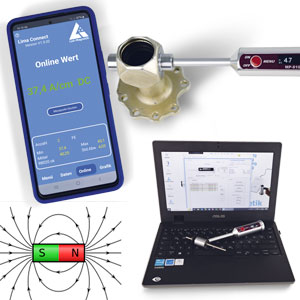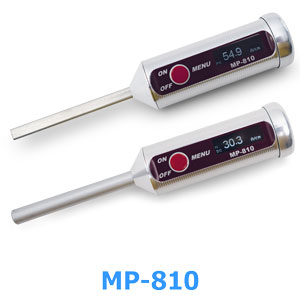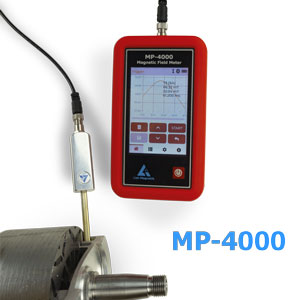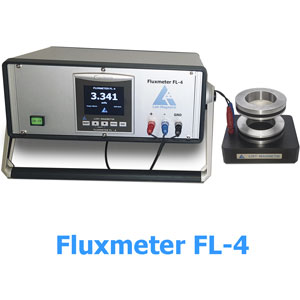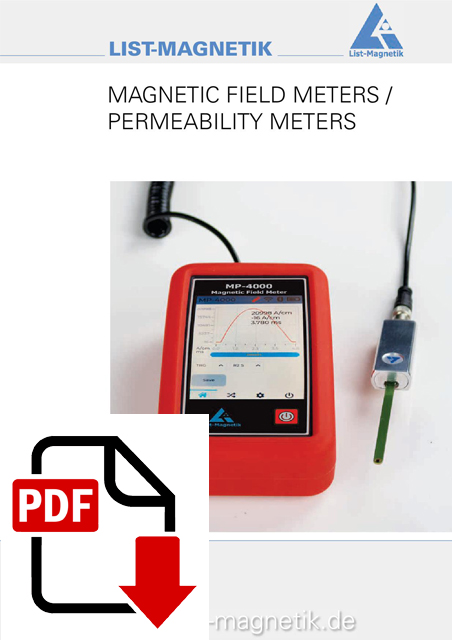List-Magnetik Magnetic field meters / Gaussmeters
Measure the maximum strength of a magnetic field |
|
|
Measuring devices that can be used to determine the peak value of a magnet or the residual magnetism of a steel part are called magnetometers, magnetic field measuring devices, teslameters or gauss meters. The field lines of a magnetic field run from the north pole to the south pole of the magnet. In the case of a rod-shaped magnet, the poles are usually at the two ends. This is where the magnetic field is strongest. Depending on the shape of the magnet, the field lines run differently, in the horseshoe magnet they are parallel within the arch. A Hall sensor in the probe records the Lorentz force, from which the field strength is calculated. The closer this Hall sensor comes to the pole, the more force acts. Different probe designs (axial, transversal) have different installation of the Hall sensor and lead to different measured values. |
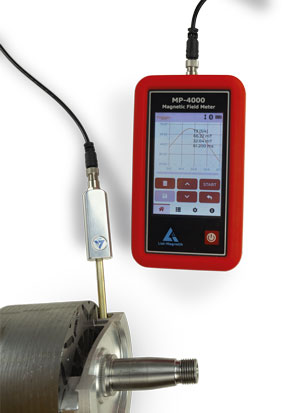
|
Low Magnetism - Magnetic Field Meters for Permeability and Remanence |
|
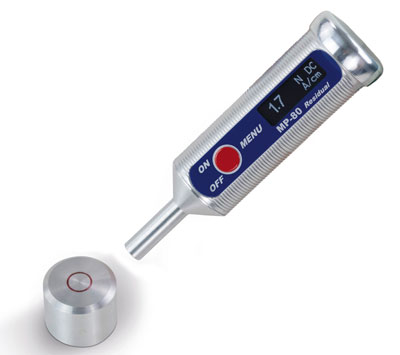
|
The magnetic permeability is an indication of how strongly a material can be magnetized. The statement makes sense where no magnetism is actually desired, for example with stainless steel. Magnetic permeability should not be confused with remanence or residual magnetism: Remanence says how strongly an object is magnetized; permeability says how easily it could be magnetized. With all magnetic field measurements, one has to consider that the earth itself has a magnetic field. It is very weak at 0.2 A/cm. Depending on the orientation of the probe, this value will increase or decrease the measured value. Deviations of 10% in the remanence range due to the earth's field are therefore conceivable, and the position of the object and the position of the measuring probe should be taken into account for the repeatability of the measurement. |
Unit of magnetic field strength (H) |
|
|
The unit of measurement for the strength of the magnetic field is “Ampere per meter” (A/m). Because of the low values, A/cm are used more, or kA/m, older also Oersted (Oe). Because the magnetic flux density B, measured in Gauss (Gs) or Tesla (T), can be converted using a constant factor, the magnetic field strength and flux density (and thus the units A/cm, kA/m, Oe, Gs, T) can be used alternately. |
|
Axial and transversal probes for measuring magnetic fields |
|
|
Axial probes measure in the direction of the probe. Transversal probes measure at an angle of 90° to the probe. The difference lies in the assembly of the Hall sensor. Transversal probes are more suitable for measurements in cavities or narrow pipes. An advantage of the axial probe on measuring devices from List-Magnetik is the distance of 2mm between the Hall sensor and the probe cap. In ball bearing production, this distance has become the de facto standard for the probe. Ultimately, you can say that the transversal probe is the more universal tool. Because practically all measurements of the axial probe can also be carried out transversally. |
|
Calibration standard / reference magnet - an important accessory for the magnetic field measuring device or gaussmeter |
|
|
A calibration standard is a reference magnet, a permanent magnet that always shows the same value when the same probe is in the same position. This allows you to safely check that the probe is still working correctly. In the case of precision calibration standards, the axial or transversal probe is held in the opening in such a way that it cannot shake. The combination of device, probe and standard forms a unit that is calibrated and certified together. The use of a probe on a calibration standard that has been coordinated with another probe can result in the reference value deviating minimally. This is because probes cannot always be built exactly the same. However, this deviation is always constant. |
|
Measure the magnetic flux with a fluxmeter |
|
|
The question here is: how strong is a magnet overall? Not only the field strength at the pole, but the entire magnet is measured with a flux meter. In combination with a Helmholtz coil, the magnetic flux of permanent magnets can be determined very precisely, since the entire volume of the magnet is viewed independently of the position. In the coil, the effect of the magnet on the coil winding is determined in the form of an electrical voltage and converted into flux. |
|
Transfer data from the magnetic field meter / gaussmeter to the PC or app |
|
|
Do you need to document or archive your series of measurements? Would you like to recognize extreme values and carry out statistical evaluations? Then our Lima Connect app for Android and PC applications are the right tools. The applications enable measurement series to be further processed or integrated in Office applications. Integration into CAQ systems is also possible. |
|








